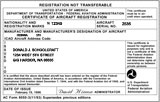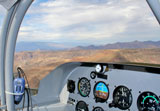|
Export CertificationGeneral InformationAircraft export certifications will result in the issuance of an export certificate of airworthiness FAA Form 8130-4 . When issued, it shows that an aircraft meets a specific airworthiness standard before being exported to a foreign country. Engine, propellers, and other aviation article export certifications will result in the issuance of an
FAA Form 8130-3
. When issued, it shows that an engine, propeller, or other aviation article meets the airworthiness standards for export to a foreign country. 1. The export classifications (Class I, II, and III) were replaced with the term “products and articles.” 2. The requirement for 100 hour/annual type inspections has been removed for exporting products. 3. Everywhere the word “Shall” was used, now reads, “Must.” 4. The word “newly” was removed from “newly overhauled”.
In addition to the FAA requirements, a number of countries have identified special import requirements and conditions that the FAA must comply with. Compliance by the exporter is required before the importing country will validate the FAA export approval. The special import requirements of various countries can be found at the FAA's website by clicking on this link
Special Import Requirements
In addition to a letter of acceptance from the importing CAA, the items not complied with must be identified in the Exceptions block of the Export Certificate of Airworthiness. Specific requirements are also identified in
Bilateral Aviation Safety Agreements (BASA).
These are agreements made between the United States and other governments for the acceptance of certain airworthiness approvals. Procedures used to implement these BASA’s are called Implementation Procedures for Airworthiness (IPA). Note: Any application forms or other documents required by a foreign authority must be obtained directly from them, not the FAA. An export approval may be issued upon request for a product to be exported to a country not covered in AC 21-2 or AC 21-18. Such an approval would certify compliance with U.S. airworthiness standards only. The FAA will not issue an export certificate of airworthiness for a U.S. manufactured aircraft located in another country unless it possesses a valid U.S. airworthiness certificate. The aircraft would then meet the requirements of
FAR 21.329.
EligibilityBasically anyone is eligible to apply for and receive an export certification approval provided that they meet the applicable requirements. An Export C of A (FAA Form 8130-4) can be issued for an aircraft if the requirements of FAR 21.329 have been met. An Export Airworthiness Approval (FAA Form 8130-3) can be issued for an engine, propeller, or other article if the requirements of FAR 21.331 have been met. Certification ProceduresClick on each link below to view the certification procedures:
|









